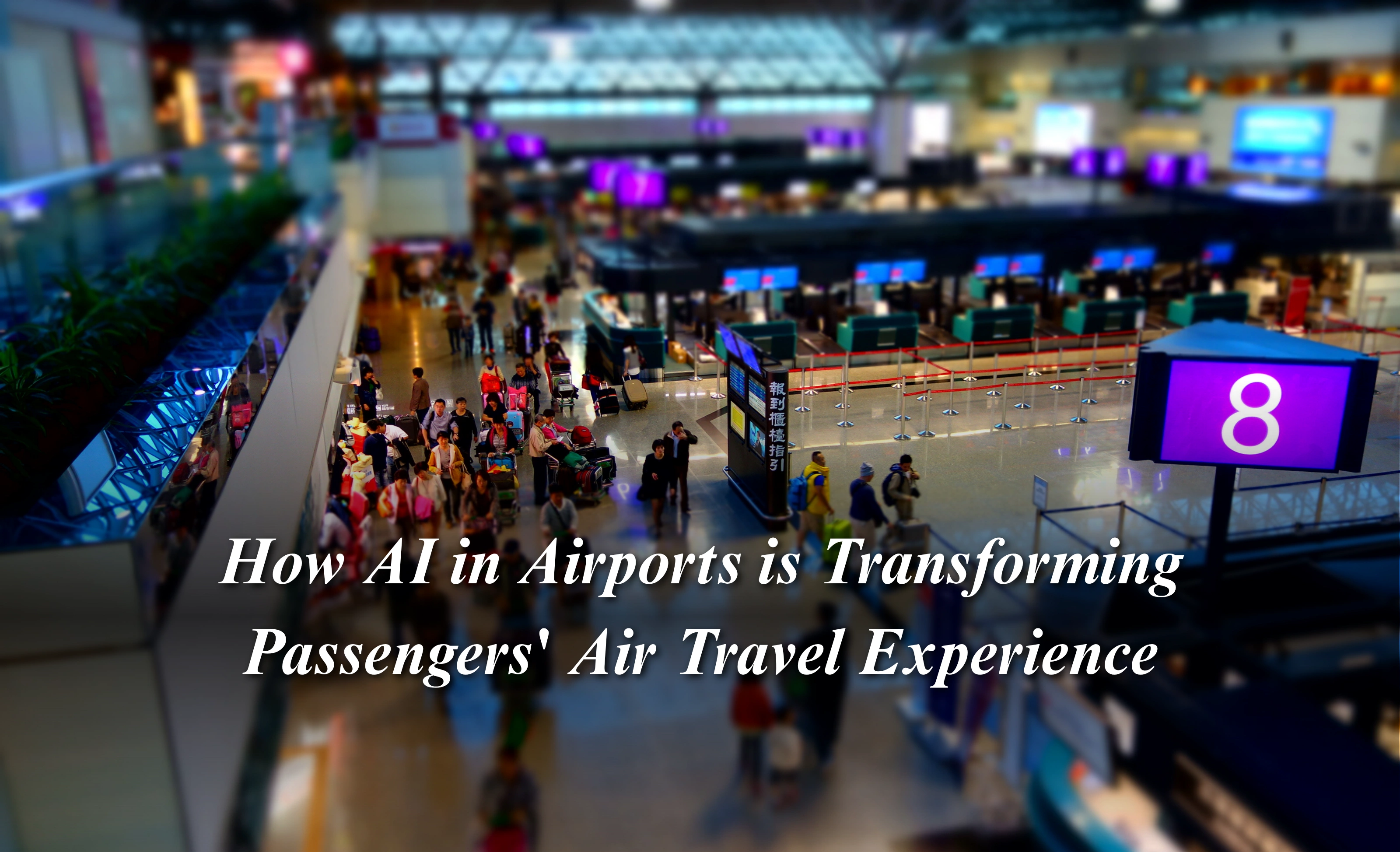How AI in Airports is Transforming Passengers' Air Travel Experience
by Travelopod
October 28, 2025

We have all been through the long lines at the airport and experienced constant anxiety when the gate changes or an announcement is missed. These airport headaches are a mood spoiler for every traveler.
Not anymore, as these are being smoothed over by a force working behind the scenes, popularly known as AI or Artificial Intelligence.
Incorporating AI in airports is enhancing the airport experience from check-in to baggage handling, flight boarding, and takeoff. Whether you’re jetting off to Europe or just hopping across the state, AI is now a co-pilot of your ground experience.
Check-In and Security: Where AI Technology First Steps In
Check-In and Security: Where AI Technology First Steps In
Think about the last time you checked in for a flight. Did you notice how much quicker and smoother it was? That wasn’t by accident. Here’s how AI made it possible:
Biometric Check-In
Biometric Check-In
The majority of airports are now opting for facial recognition at their check-in counters and self-service kiosks. Now you no longer need to worry about accessing your travel documents; you simply look at the screen, and it's done in no time.
For example, the Face Express system at Narita International Airport in Japan offers a paperless process from baggage drop to boarding. The entire system works on a facial recognition system powered by AI.
In the US, Delta Airlines is also working on a similar technology at Atlanta’s Hartsfield-Jackson Airport for seamless boarding and security checks.
Smarter Security: AI Eyes on the Details
Smarter Security: AI Eyes on the Details
We all know that security checks are often a stressful part of the airport experience. With AI integration, this process is now smarter, faster, and a lot less intrusive.
The TSA is developing AI tools that can scan baggage images to detect restricted items without requiring manual checks. Expect smart X-ray baggage scanners that not only detect threats but also reduce false alarms. They speed up the process and give airport staff more time to focus on actual risks.
How AI Helps You Find Your Way At The Airport
How AI Helps You Find Your Way At The Airport
Navigating airports can feel quite overwhelming, especially during peak travel times. But AI is now stepping in to guide you.
Smarter Movement, Smoother Flow
Smarter Movement, Smoother Flow
Cameras and sensors are now being integrated with AI systems to monitor foot traffic throughout terminals. They collect data on how passengers move and where crowds are forming, and accordingly provide solutions to ease congestion at the airports.
AeroCloud, the AI-powered software at Liverpool John Lennon Airport, UK, tracks passenger flow in real-time. It helps airport staff to take prompt action to manage congestion at the various counters across the airport.
AI-Powered Airport Navigation Systems
AI-Powered Airport Navigation Systems
At Singapore’s Changi Airport, passengers can already use augmented reality features on the airport app. Just hold up your phone, and digital arrows guide you exactly where to go. You’re not lost—you’re directed.
The Baggage Game: AI Is Keeping Tabs
The Baggage Game: AI Is Keeping Tabs
If you’ve ever noticed that an empty baggage carousel spins while the last travelers walk off with their bags, well, it's all artificial intelligence.
Real-Time Baggage Tracking
Real-Time Baggage Tracking
AI-driven baggage systems are taking the mystery out of Where did my bag go?. With a real-time baggage tracking system, you will exactly know where it is. The RIFD baggage tracking system will be more efficient at locating lost luggage with AI integration.
Lounges, Retail & You: A More Personalized Airport Visit
Lounges, Retail & You: A More Personalized Airport Visit
AI isn’t just about speed and security. It’s also quietly making your time in the terminal more comfortable, more convenient, and yes, more personal.
Smarter Lounges, Custom Recommendations
Smarter Lounges, Custom Recommendations
Many lounges are now using biometric check-in to eliminate lines and verify eligibility instantly. They’re also monitoring peak hours to ensure that when you finally collapse into a lounge chair, the coffee machines aren’t overwhelmed.
Airports like Gatwick utilize AI chatbots to assist travelers in finding what they need, whether it's a place to charge their phone, gluten-free dining options, or a duty-free shop. Some systems even use your travel history and purchase patterns to suggest where to go next.
What’s Coming Next
What’s Coming Next
AI is doing more than responding to problems now; it has levelled up and is starting to anticipate them.
Predictive Maintenance & Smarter Staffing
Predictive Maintenance & Smarter Staffing
Airports are testing systems that predict when baggage belts or escalators might encounter functionality issues. That means fewer delays, less waiting, and better use of airport staff.
At London Heathrow, a pilot program called AIMEE helps air traffic controllers manage takeoffs and landings more efficiently, especially when visibility is low.
AI-Powered Robots
AI-Powered Robots
And yes, robots are part of the picture, too. From automated cleaning bots to luggage carriers to mobile guides that escort you to your gate, they’re beginning to appear more often—and getting smarter every year.
AI Isn’t Taking Over. It’s Tuning In.
AI Isn’t Taking Over. It’s Tuning In.
No, AI won’t replace the excitement of a boarding call or the relief of finding your suitcase at baggage claim. But it’s changing the airport experience from the ground up quietly, smartly, invisibly.
So next time your airport experience feels unusually smooth when the line moves faster, your bag shows up exactly where it should, and your gate feels oddly easy to find, don’t chalk it up to luck. AI was probably behind it.
Travelopod helps you fly smarter—partnering with top airlines and offering exclusive phone-only deals you won’t find online. Call us to unlock special fares on flights to India and experience the future of air travel at unbeatable prices.
EXPLORE MORE



